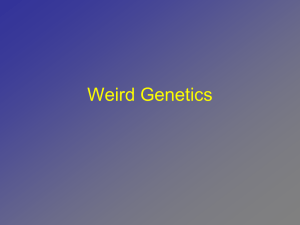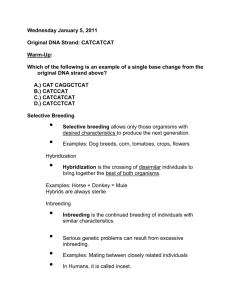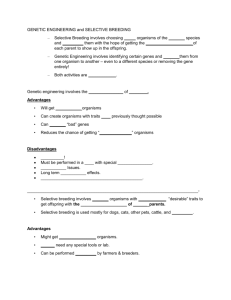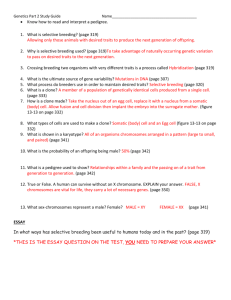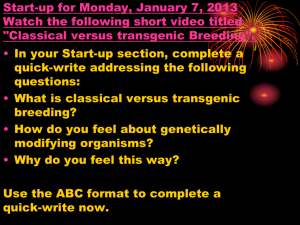Disadvantages of Selective Breeding
advertisement
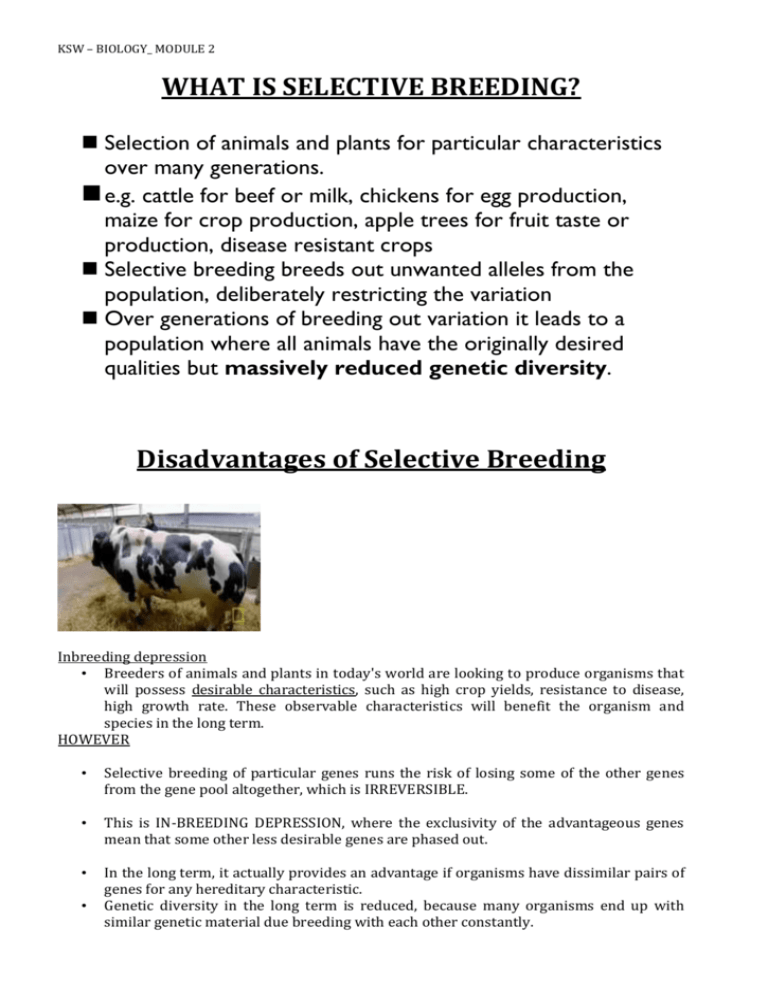
KSW – BIOLOGY_ MODULE 2 WHAT IS SELECTIVE BREEDING? Selection of animals and plants for particular characteristics over many generations. e.g. cattle for beef or milk, chickens for egg production, maize for crop production, apple trees for fruit taste or production, disease resistant crops Selective breeding breeds out unwanted alleles from the population, deliberately restricting the variation Over generations of breeding out variation it leads to a population where all animals have the originally desired qualities but massively reduced genetic diversity. Disadvantages of Selective Breeding Inbreeding depression • Breeders of animals and plants in today's world are looking to produce organisms that will possess desirable characteristics, such as high crop yields, resistance to disease, high growth rate. These observable characteristics will benefit the organism and species in the long term. HOWEVER • Selective breeding of particular genes runs the risk of losing some of the other genes from the gene pool altogether, which is IRREVERSIBLE. • This is IN-BREEDING DEPRESSION, where the exclusivity of the advantageous genes mean that some other less desirable genes are phased out. • In the long term, it actually provides an advantage if organisms have dissimilar pairs of genes for any hereditary characteristic. Genetic diversity in the long term is reduced, because many organisms end up with similar genetic material due breeding with each other constantly. • KSW – BIOLOGY_ MODULE 2 EXAMPLE: • With Crufts behind them for another year, breeders and judges are now preparing for smaller dog shows all over the UK. Many of these rely on the strict selective breeding of pedigree dogs. • This can lead to chronic genetic problems and diseases, the animal could get sick easier. • Genetic engineering borderlines on many moral issues, particularly involving religion, which questions whether man has the right to manipulate the laws and course of nature. • For show animals such as some dogs, selective breeding is used quite strictly by breeders aiming at a certain look which is set down as the breed - so there are serious moral questions to it too. • Too much close interbreeding to obtain certain cosmetic traits can also result in the amplifying of inherent illnesses • The more that inbreeding is used to get rid of undesirable traits or to fix a desirable trait, the more likely it is that individuals will also inherit the same set of genes for the immune system from both parents, and be born with less vigorous immune systems. • The immune system problem is compounded over successive generations as the animals become genetically more uniform (like the cheetah). According to one theory, immunodeficiency may be caused by a simple lack of different pairs of genes that control the immune system. • This is why random-bred cats are generally so robust. More examples: 1. Bloodhounds develop loose skin around their eyes, increasing the potential unwanted small objects getting stuck in their eyes 2. Centuries of selective breeding has led to the creation of many different breeds of animal all inheriting very similar characteristics to the previous generation, which may include genetic diseases. (Many King Charles Cavaliers develop heart murmurs and other heart problems, cruelly cutting their lives short) 3. Bulldogs develop oversized heads which result in many having to be born through caesarean section 4. Pekingese dogs have very short faces, making it hard for them to breath or smell 5.

